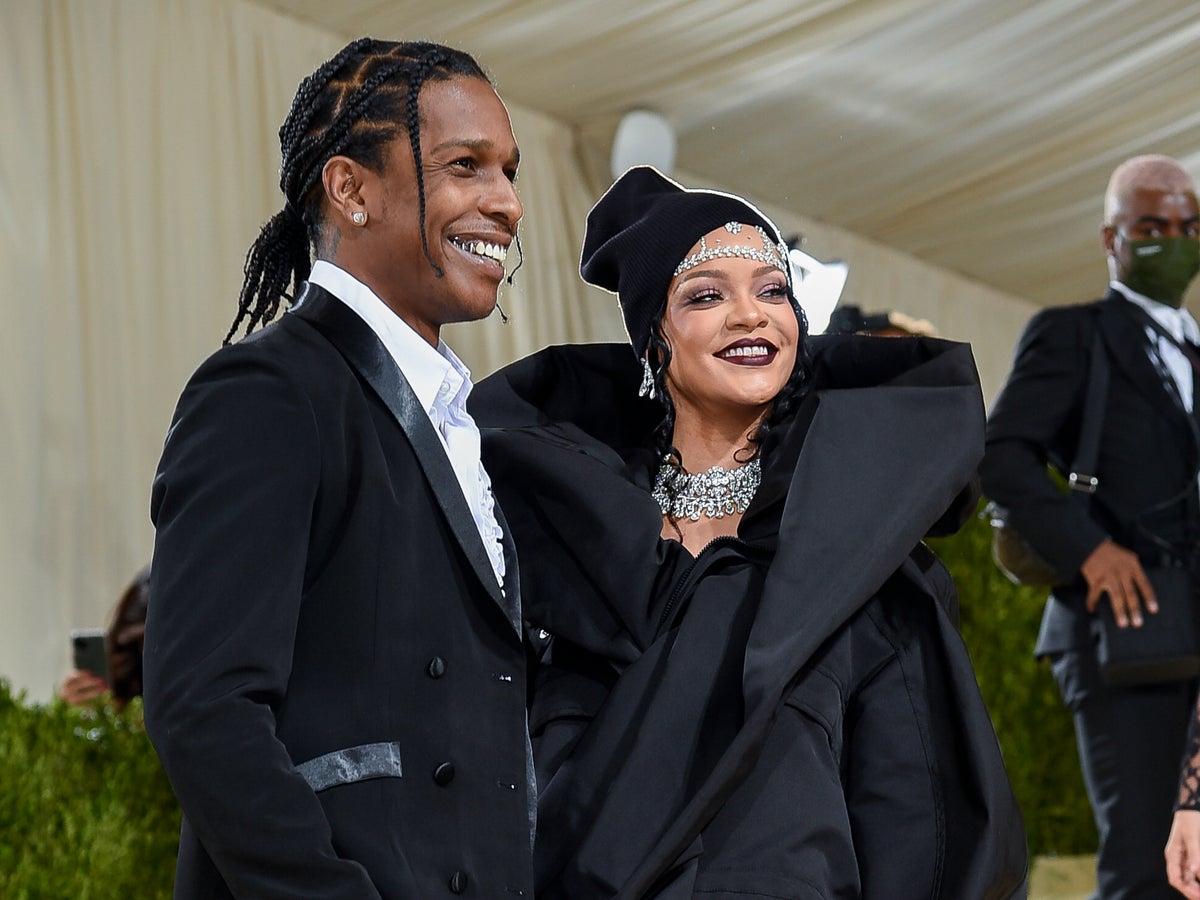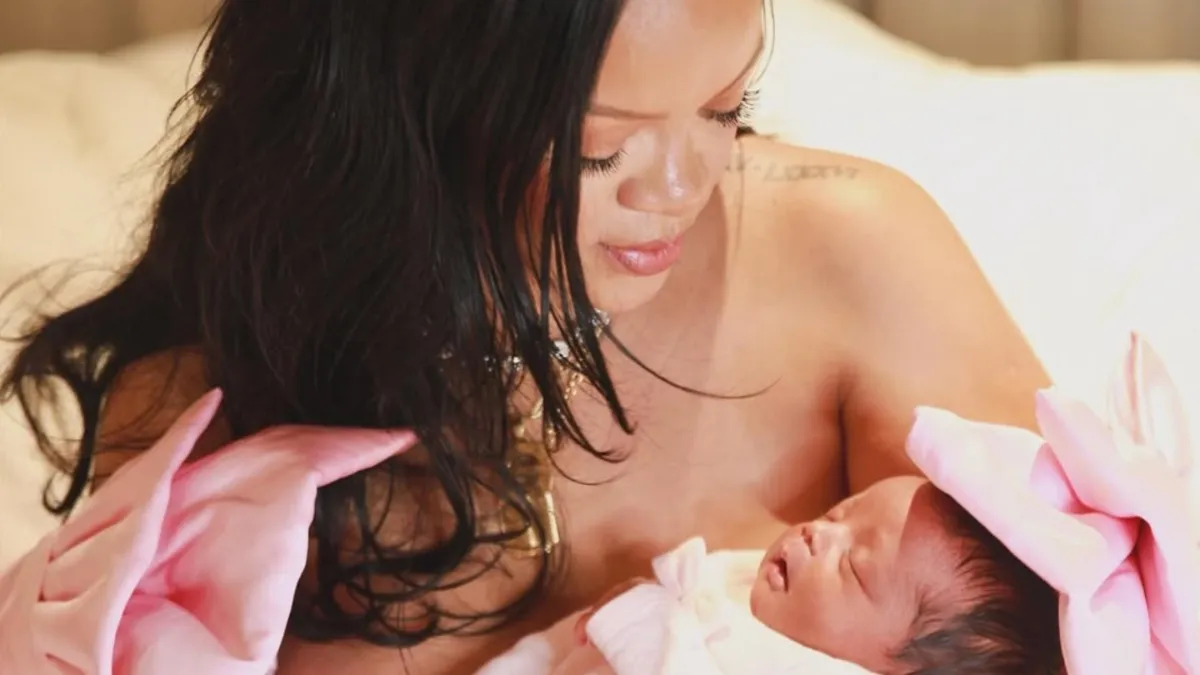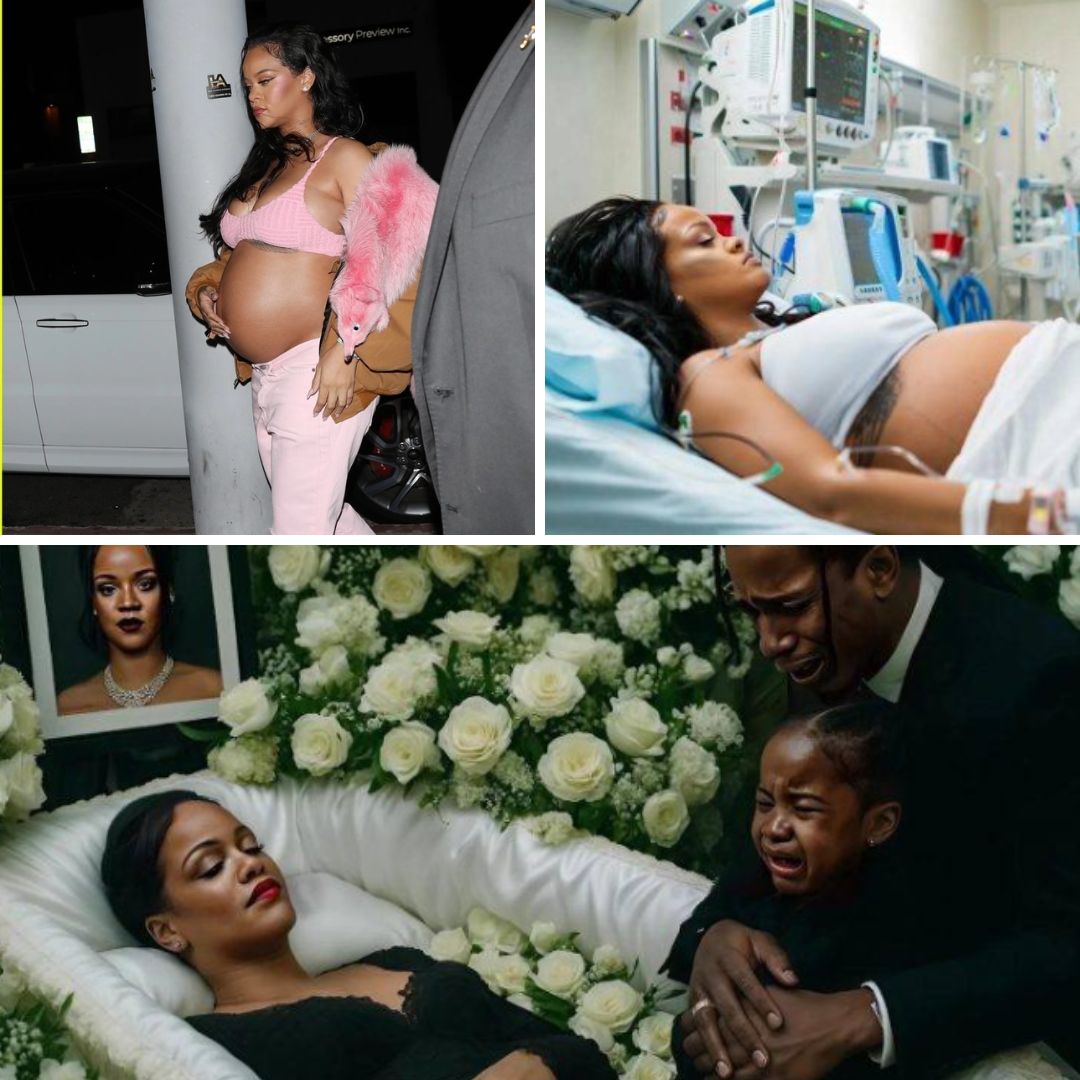Rihanna’s Third Baby: Joyful Reality vs. Viral Rumors
For fans around the world, Rihanna’s family news has been a bright spot in a year full of headlines. In late September 2025, the global superstar and entrepreneur announced the arrival of her third child with A$AP Rocky — a healthy baby girl — and shared the name with a celebratory post. Yet even as congratulations poured in, the internet produced a parallel narrative: viral posts claiming a tragedy in the delivery room, whispered “secrets,” and unverified accounts from unnamed “insiders.”
This article separates fact from fiction. It explains what reputable outlets have reported, why sensational falsehoods spread so quickly, and how readers can tell the difference between credible reporting and rumor-based clickbait.
What Verified Reporting Says

Rihanna and A$AP Rocky confirmed they were expecting their third child during the 2025 Met Gala. Major outlets covered the moment not as gossip but as an on-record confirmation from the couple, complete with photos and quotes. In September 2025, Rihanna then announced the birth of their daughter and revealed her name in a social post that was widely picked up by mainstream media. The public facts are straightforward: the baby was born in Los Angeles; mother and child were doing well; the couple are now parents of three.
No reputable newsroom reported a fatal delivery, an emergency loss, or a “secret unearthed” tied to the birth. Where outlets did publish details, they referenced public posts, official records, or attributed interviews — the core ingredients of verifiable journalism.
Where the Hoax Came From

The competing narrative — a supposed “fatal birth” and a partner “shattered by regret” — shows classic hallmarks of viral misinformation:
-
Anonymous sourcing and hearsay. The rumors lean on unnamed “insiders,” “nurses,” and “staffers,” offering dramatic quotes without dates, titles, or on-record confirmation.
-
Overloaded emotional triggers. Language like “collapsed,” “sobbing,” “lifelong regret,” and “haunting decision” is designed to spark outrage and shares, not to inform.
-
Content farms and scraped feeds. Some posts piggyback on genuine news about Rihanna’s pregnancy or baby’s name, then insert fabricated “twists” to keep users scrolling within a recommendation loop.
-
Out-of-context references. Mentions of Cedars-Sinai, private suites, candles in Barbados, or celebrity tributes appear without verifiable sources — details added to simulate authenticity.
These tactics are common in celebrity hoaxes: they blend a truthful kernel (Rihanna gave birth) with unverified drama (a “fatal” outcome) to create virality.
How Credible Outlets Handle Celebrity Births

Legitimate entertainment reporting might seem glamorous, but it follows the same rules as any beat:
-
On-record confirmation. Reporters cite a direct statement, social post from the subject, a representative’s comment, or official documentation.
-
Attribution and consistency. Multiple outlets independently confirm the same facts; wording and details align across reports.
-
Corrections when needed. If something changes, reputable publishers update stories with clear timestamps.
In Rihanna’s case, respected publications reported the pregnancy confirmation at the Met Gala and later the baby’s birth, name, and basic details. There was no credible pivot to a tragedy narrative.
Why False Celebrity Narratives Spread

Even savvy readers can get caught by convincing hoaxes. A few drivers:
-
Speed over accuracy. Social platforms reward immediacy. “Breaking” accounts often post first and verify later — or never.
-
Engagement economics. Sensational claims outperform routine good news. Posts that provoke shock or grief are more likely to be shared.
-
AI-assisted fabrication. Today’s tools can generate plausible “quotes,” doctored screenshots, and synthetic voiceovers, making rumors look polished.
-
Confirmation loops. Once a user engages with one dramatic rumor, algorithms feed them more of the same, creating an echo chamber.
How to Fact-Check Celebrity Claims in Minutes
Before reposting a shocking story, readers can run a quick, practical checklist:
-
Look for named sources. Is anyone on the record? A publicist? The artist? A hospital spokesperson? If not, be cautious.
-
Check two or three mainstream outlets. If AP, major networks, or reputable magazines aren’t reporting it, there’s probably a reason.
-
Examine dates and timelines. Do the supposed events line up with known appearances, posts, or travel?
-
Beware of stitched screenshots. A single image of a “deleted post” is not proof. Search if established outlets archived it.
-
Watch the language. Excessive adjectives and melodrama (“a secret revealed at dawn”) are red flags.
The Real Story: Family, Privacy, and Boundaries
Beyond the noise, there’s a more meaningful story. Rihanna has consistently framed motherhood as central to her life. Publicly, she and A$AP Rocky have chosen a deliberate pace: announcing milestones in their own time, sharing selected images, and avoiding ongoing commentary. That sets clear boundaries — for their children’s privacy and their own.
The restraint also models a healthier celebrity-fan relationship: fans can celebrate milestones without demanding intimate medical details. It acknowledges that public figures are still parents first, and that joyful news doesn’t require endlessly mined “twists” to hold attention.
Why Debunking Matters
Some may ask, “If the truth is out there, why address the rumors at all?” Because hoaxes carry real-world harms:
-
Emotional manipulation. Fans who care deeply experience needless distress.
-
Reputation damage. Fabrications can cloud genuine achievements and milestones.
-
Desensitization. A steady diet of sensational falsehoods erodes trust in accurate reporting when serious news truly breaks.
Countering misinformation with clear, sourced facts helps restore a shared baseline of reality — and keeps the focus where it belongs: on the family’s real celebration.
A Note on Responsible Coverage
Outlets and creators can support healthier information ecosystems with a few commitments:
-
Link to primary sources. When referencing a birth announcement, include the official post or a reliable news report.
-
Avoid speculative framing. “Sources say” is not a substitute for reporting.
-
Use precise headlines. Headlines should match verified facts, not imply tragedy or scandal that the article cannot substantiate.
-
Respect privacy. Medical events and grief (when they occur) merit sensitivity and restraint, not play-by-play rumor threads.
Conclusion
Rihanna and A$AP Rocky’s third child arrived in September 2025, and reputable coverage reflects a straightforward, happy milestone. The competing “fatal birth” rumor is a textbook example of viral misinformation: anonymous claims, dramatic embellishment, and zero credible verification.
Celebrating real news — and refusing to amplify fakes — honors the family’s moment and helps all of us build better habits online. In an age where hoaxes travel fast, a few minutes of verification is the best gift fans can give to the artists they love.
Sources
-
Associated Press – A$AP Rocky confirms Rihanna is expecting baby No. 3 at the 2025 Met Gala
-
ABC News – Rihanna expecting third child, confirmed at the Met Gala
-
CBS News – A$AP Rocky confirms baby No. 3 with Rihanna at the 2025 Met Gala
-
Vogue – Rihanna gives birth to her third child with A$AP Rocky (girl)
-
The Independent – Rihanna announces birth and name of third child
-
Evening Standard – Rihanna reveals baby girl’s name and birth details
-
TMZ – Birth certificate details for Rihanna and A$AP Rocky’s third child
-
Hindustan Times – Round-up on baby name announcement and meaning
